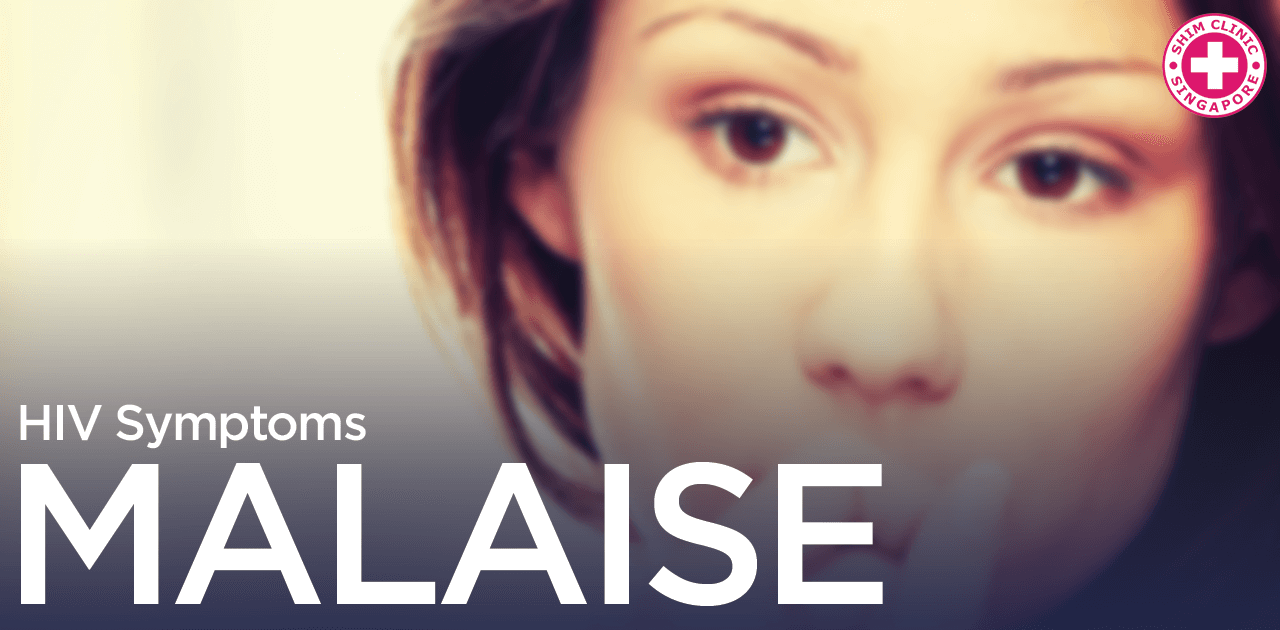HIV Malaise Singapore | Shim Clinic
| Help me about HIV Malaise ! |

| Permalink: https://shimclinic.sg/hiv-malaise |
Some people don’t have symptoms when they first get HIV, but many people experience symptoms during this time. These are general symptoms like malaise, making it difficult to be certain whether the symptoms are due to HIV. An HIV test is necessary to figure out the cause of the symptoms.
HIV can often be a silent infection, meaning that it can be years between acquiring the virus and having obvious symptoms. However, many people do experience symptoms in the early period after they acquire the virus. This is known as acute HIV infection.
One common symptom of acute HIV infection is malaise. This is a medical term for the general ill feeling that many people feel when they’re sick. People who are experiencing malaise may say things like, “I don’t feel so good.” They may not be able to describe the feeling exactly, but they know that they just generally don’t feel quite right. Sometimes, people ascribe their malaise to simple tiredness or stress and don’t pay attention to it.
Malaise is a common symptom of infections. It results from the body using resources to fight off the invading pathogen, so that it doesn’t have as much energy available for other things. Changes in the types of cells in the blood, the release of factors designed to get rid of the invaders, and other factors related to the immune system being activated all contribute to the general ill feeling of malaise.
- HIV may not cause symptoms for years, but sometimes there are symptoms starting a few weeks after the infection is acquired. This is called acute HIV infection.
- One common symptom of acute HIV infection is malaise, or a general ill feeling.
- Malaise is common as a symptom of many types of illness, including many different infections as well as other conditions like cancer.
- To figure out whether malaise is due to HIV, an HIV test is necessary.
- Tell your doctor about your possible HIV symptoms (including malaise) and when your exposure may have occurred, so you can get the right kind of HIV test.
Malaise is not only one of the most common HIV symptoms. It’s also a very common symptom of many different infections, ranging from the common cold to serious infections like pneumonia. It can also occur with other types of conditions, such as cancer. In order to know whether malaise is due to HIV, it’s necessary to do an HIV test.
If you simply go to an STD clinic for an anonymous HIV test, then the test may actually miss your acute HIV infection. This is because the rapid HIV tests usually used for screening are based on looking for antibodies, which the body produces in response to an infection. It takes a while for the body to produce enough antibodies, so this type of HIV test isn’t positive for 3 to 12 weeks after the infection. A test called a fourth-generation test can detect HIV sooner, but still takes 2 to 6 weeks to become positive; no test can detect an HIV infection immediately after it occurs. Tell your doctor about your potential HIV symptoms and when your possible exposure(s) occurred, so you can get the right type of HIV test.
Sources:
Mayo Clinic. “STD symptoms: Common STDs and their symptoms.” Mayo Clinic. Published 18 Mar 2015. Accessed 20 Jul 2016. http://www.mayoclinic.org/std-symptoms/art-20047081
Centers for Disease Control and Prevention. “Screening Recommendations Referenced in Treatment Guidelines and Original Recommendation Sources.” Centers for Disease Control and Prevention. Published 04 Jun 2015. Accessed 20 Jul 2016. http://www.cdc.gov/std/tg2015/screening-recommendations.htm
Centers for Disease Control and Prevention. “HIV/AIDS.” Centers for Disease Control and Prevention. Published 05 Jul 2016. Accessed 27 Jul 2016. http://www.cdc.gov/hiv/
Centers for Disease Control and Prevention. “HIV Basics – Testing.” Centers for Disease Control and Prevention. Published 12 Jul 2016. Accessed 20 Jul 2016 http://www.cdc.gov/hiv/basics/testing.html
U.S. Department of Health & Human Services. “Post-Exposure Prophylaxis (PEP).” AIDS.gov. Published 21 Sep 2015. Accessed 20 Jul 2016. https://www.aids.gov/hiv-aids-basics/prevention/reduce-your-risk/post-exposure-prophylaxis/
| Timeline | HIV | STD | Pregnancy |
|---|---|---|---|
| Before exposure | |||
| Contraception (females only) | |||
| HIV PrEP (pre-exposure prophylaxis) - Stop HIV infection before exposure | STD vaccine: - Hepatitis vaccine - HPV vaccine | ||
| STD / HIV exposure | |||
| 0-72 hours | HIV PEP (post-exposure prophylaxis) - Stop HIV infection after exposure | STD testing * - Screening test - to look for asymptomatic infections - from previous exposures | Emergency contraception with the morning-after pill (females only) |
| 2 weeks | HIV DNA Test | ||
| 1 month | HIV 4th Generation Test - SD Bioline HIV Ag/Ab Combo - Fingerprick blood sampling. - 20 minutes to results | ||
| 3 months | HIV 3rd Generation Test - OraQuick® HIV-1/2 Antibody - Oral fluid or - Fingerprick blood sampling. - 20 minutes to results | STD testing * - Full & comprehensive - diagnostic test - to look for current infections | |
| Watch for | HIV Symptoms | STD Symptoms | |
| If infected | HIV Treatment | STD Treatment | Abortion |
References